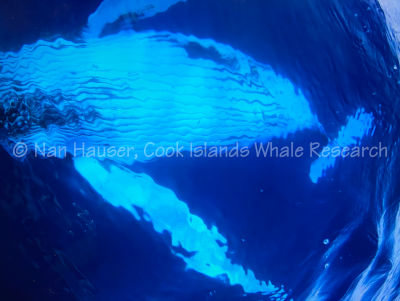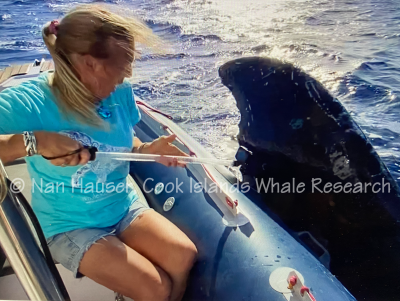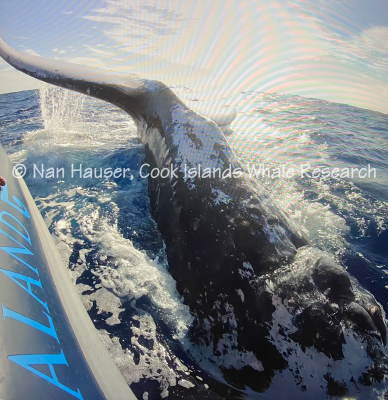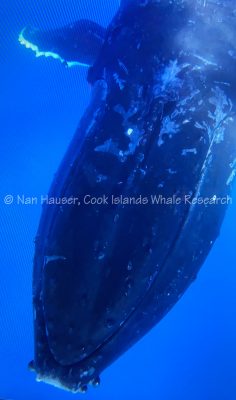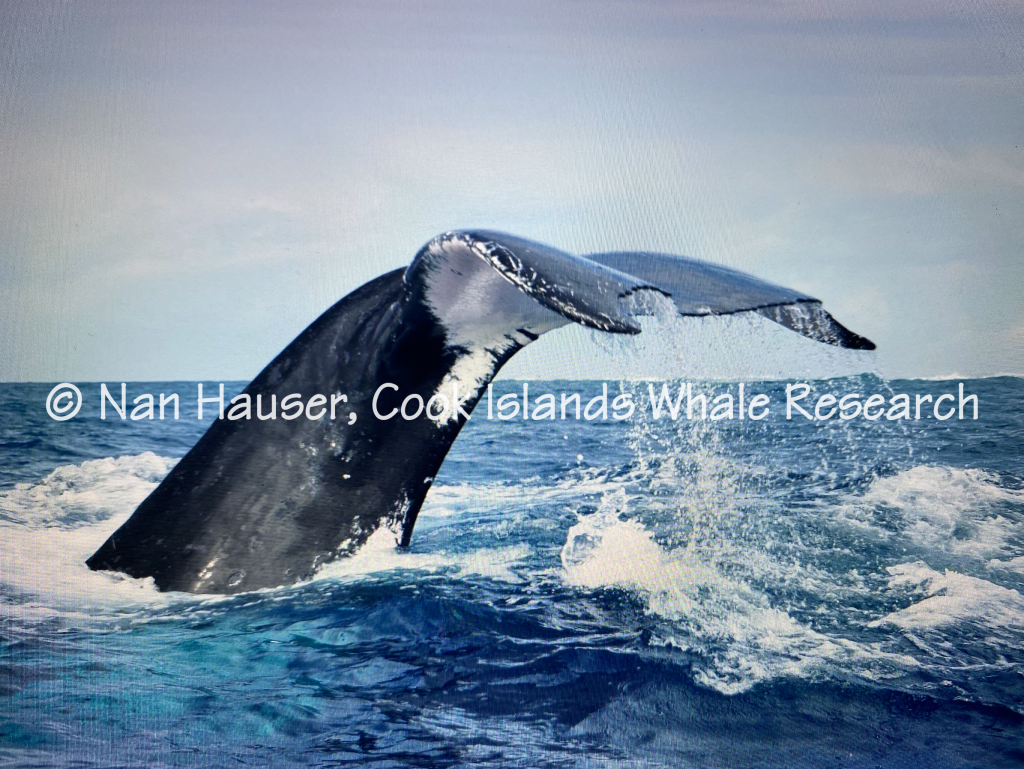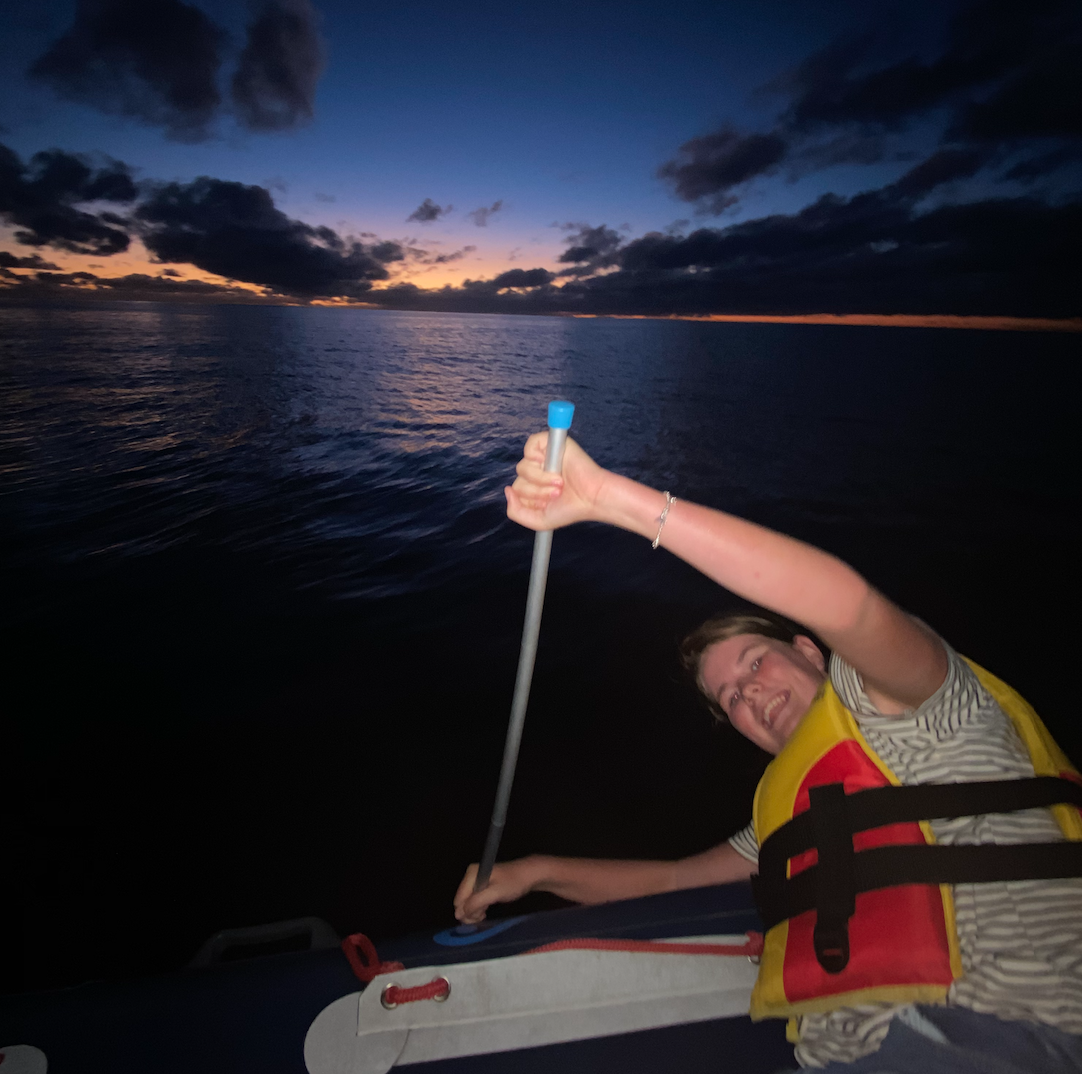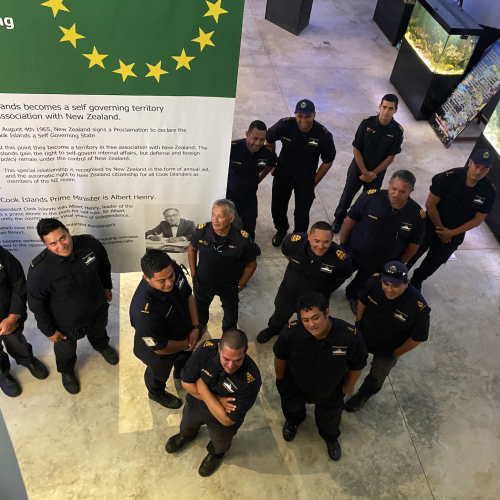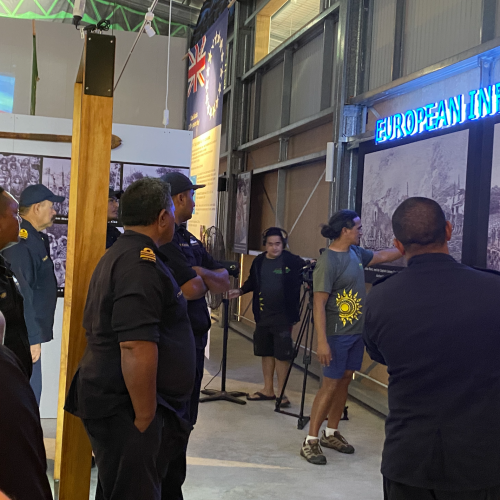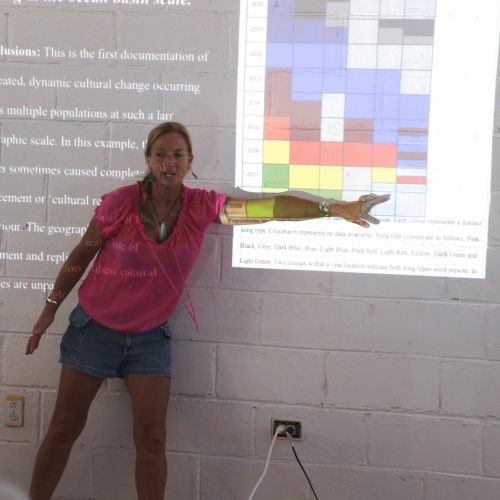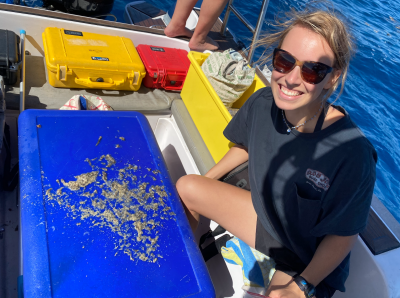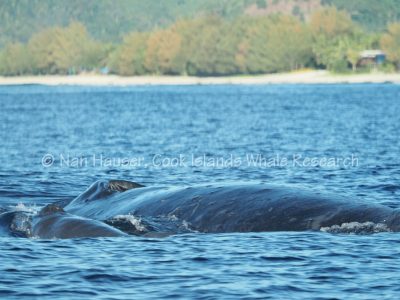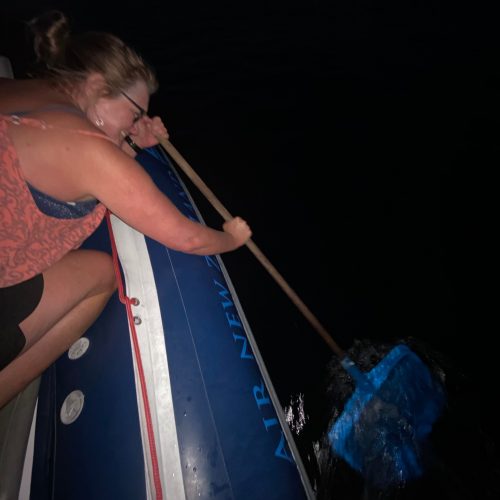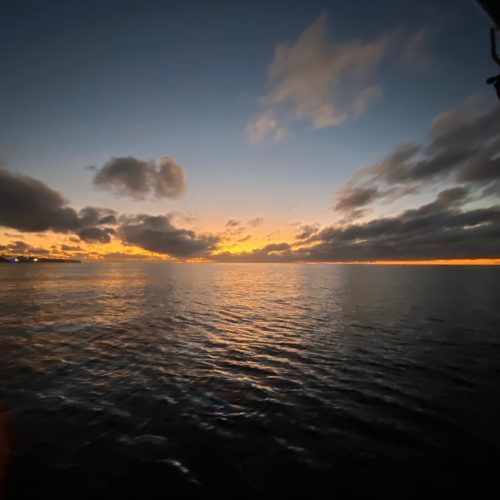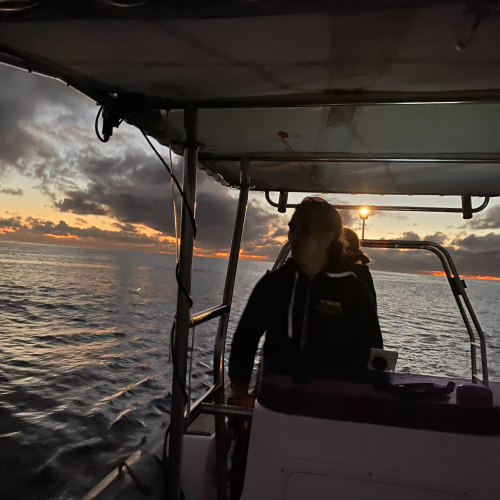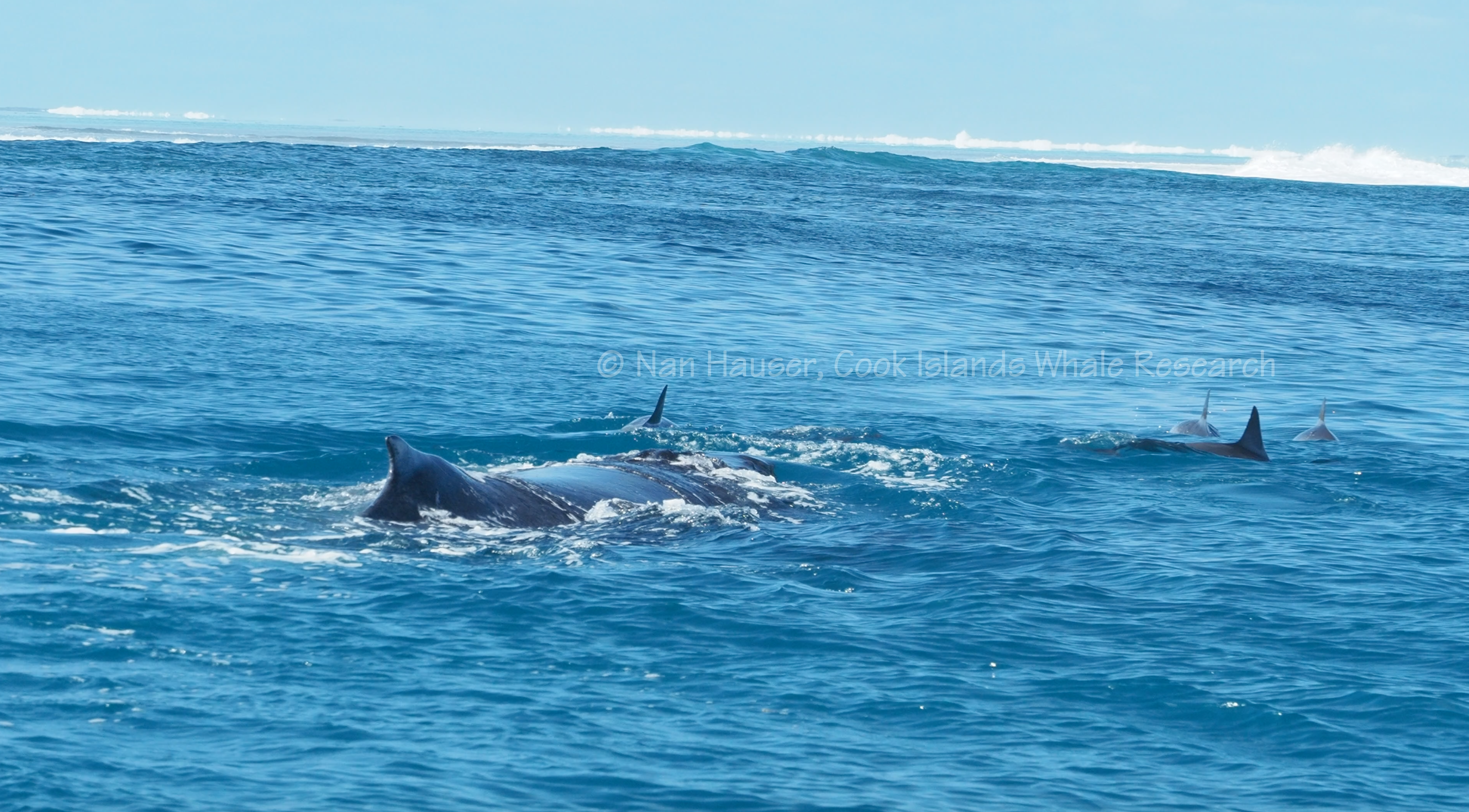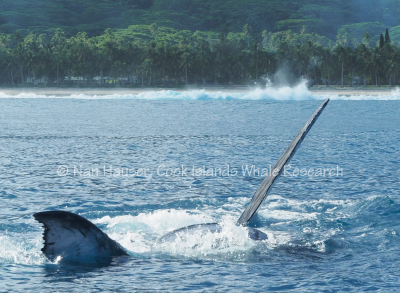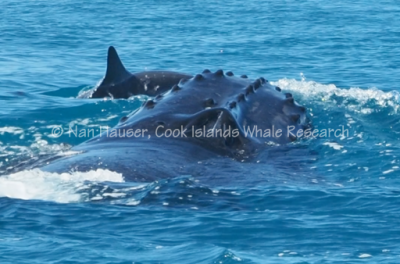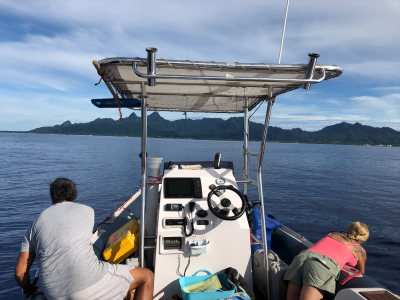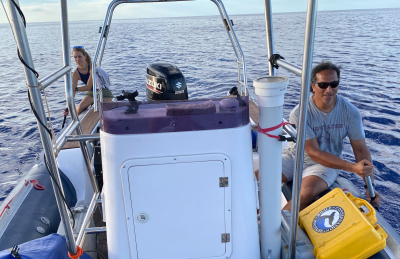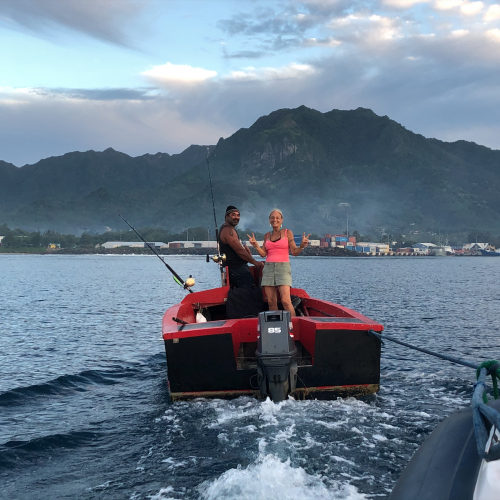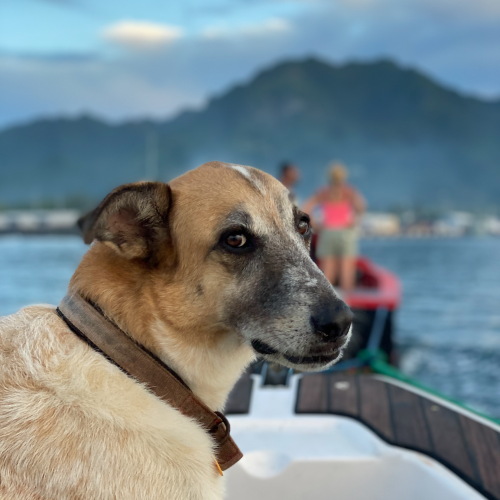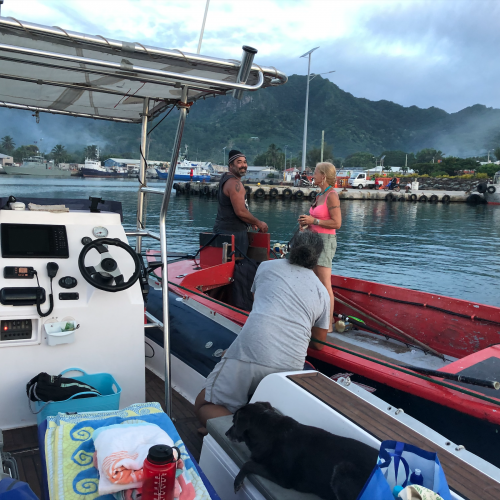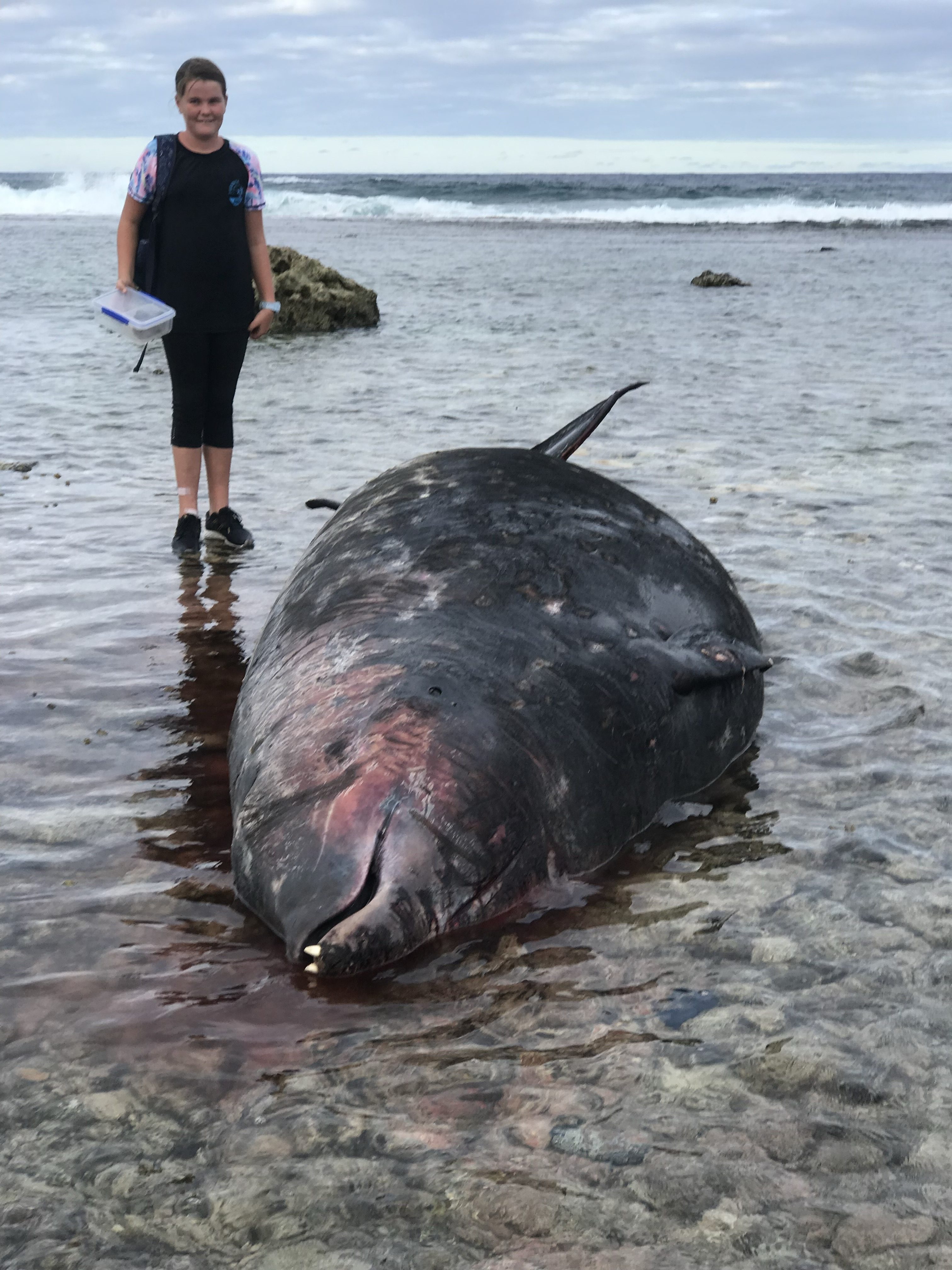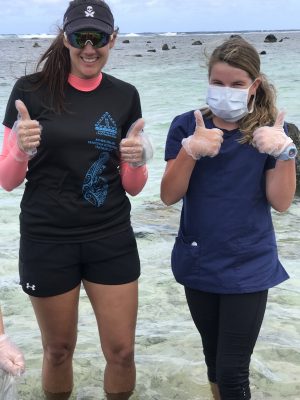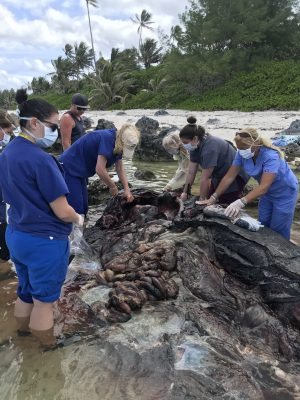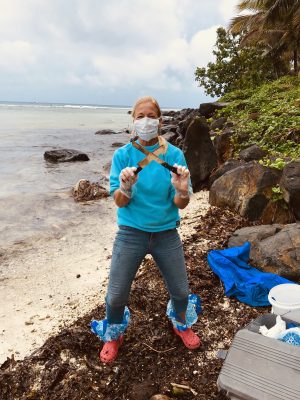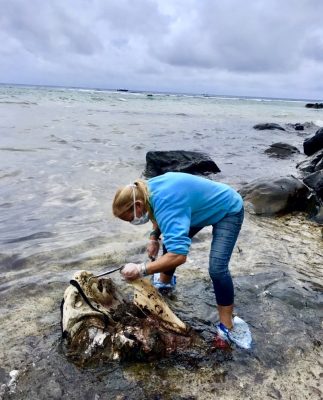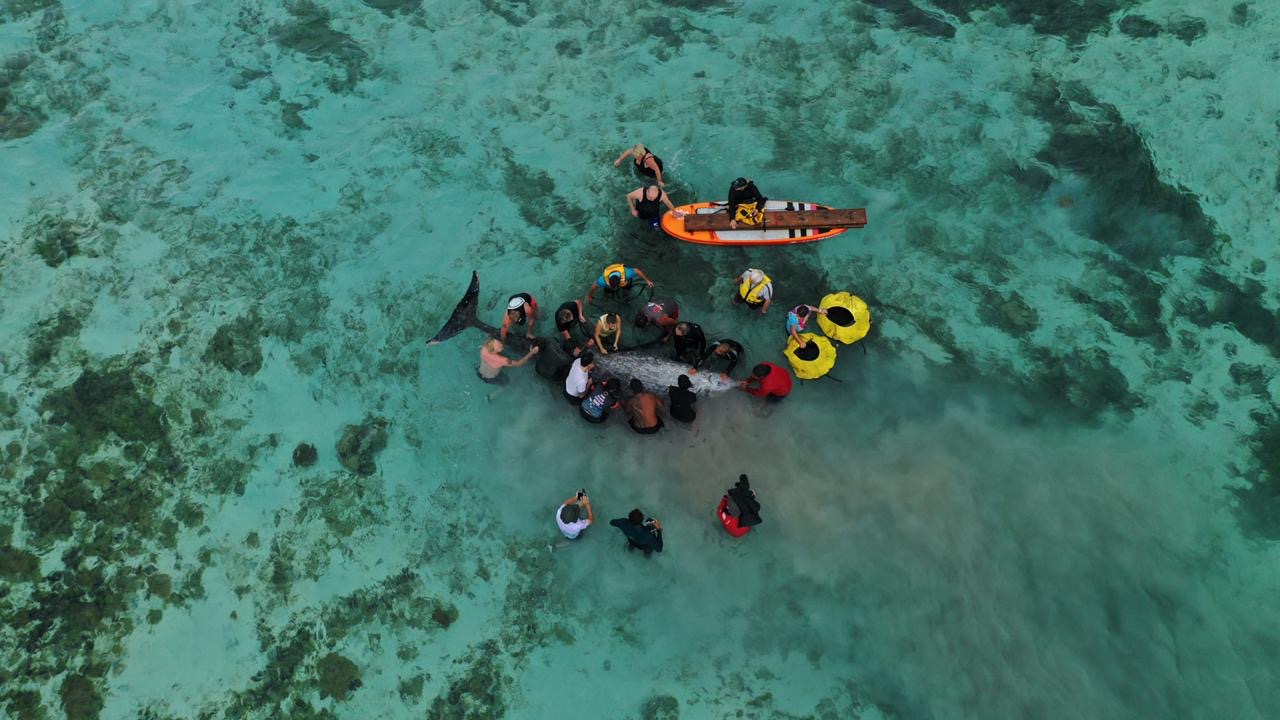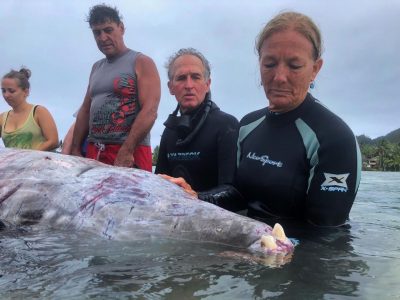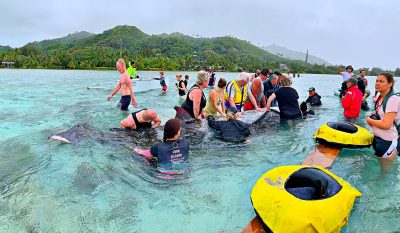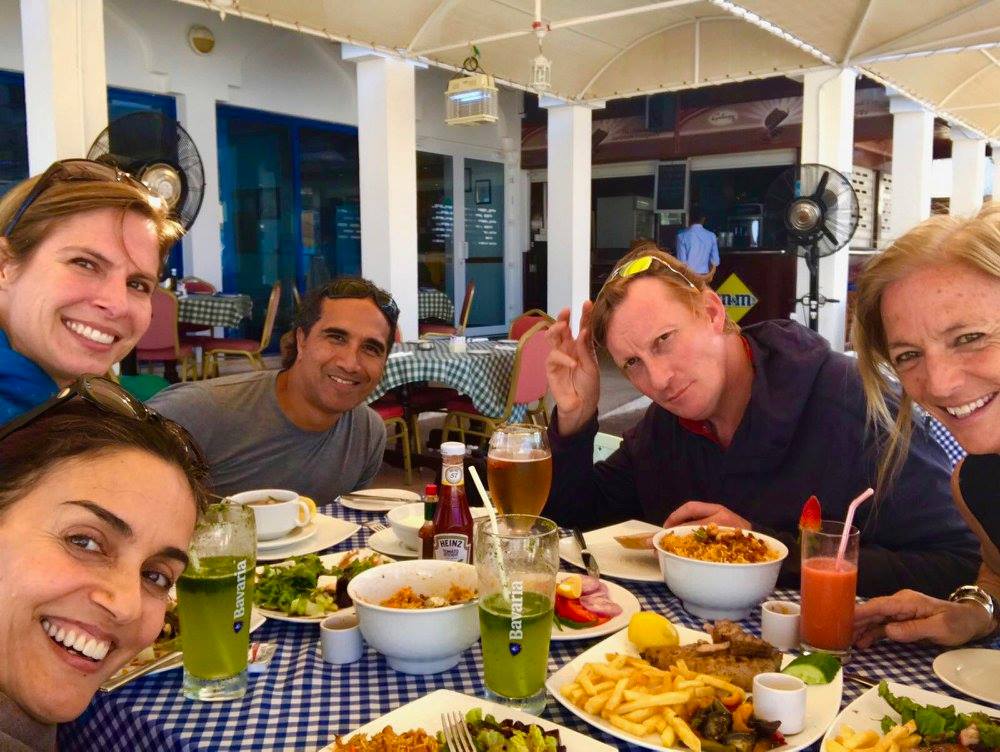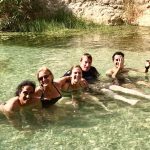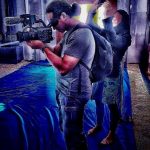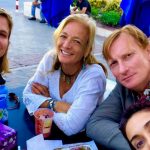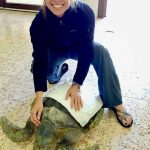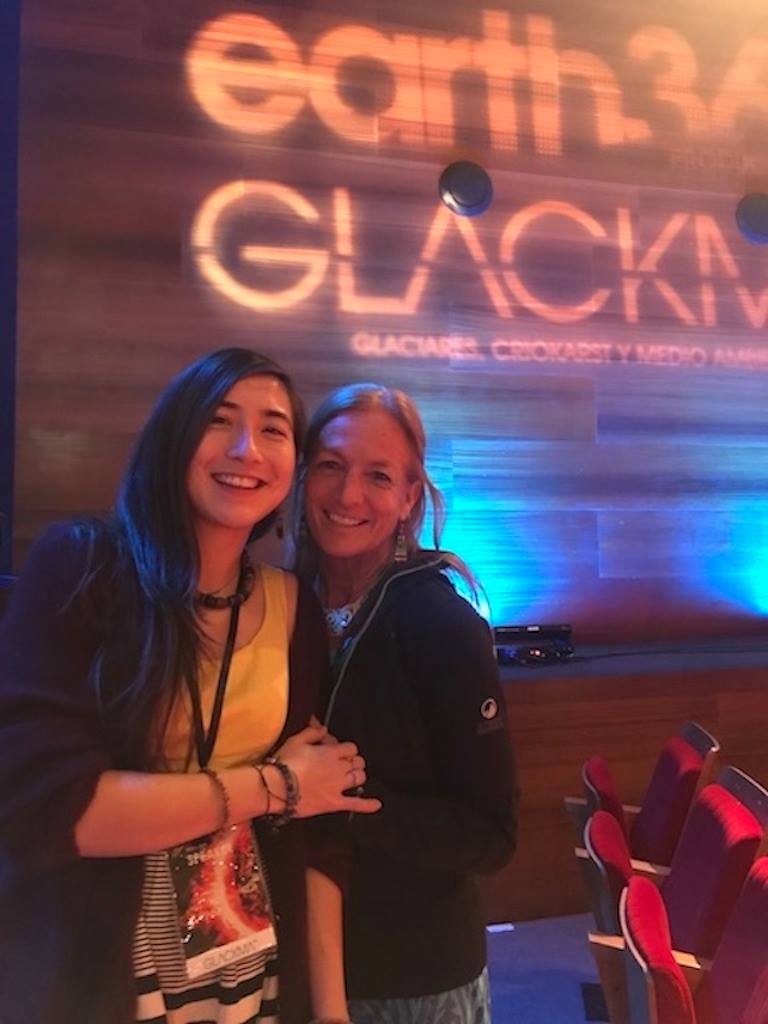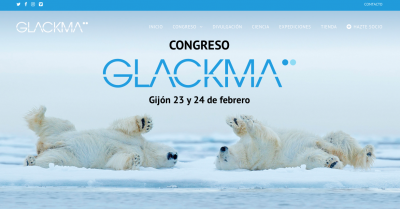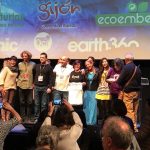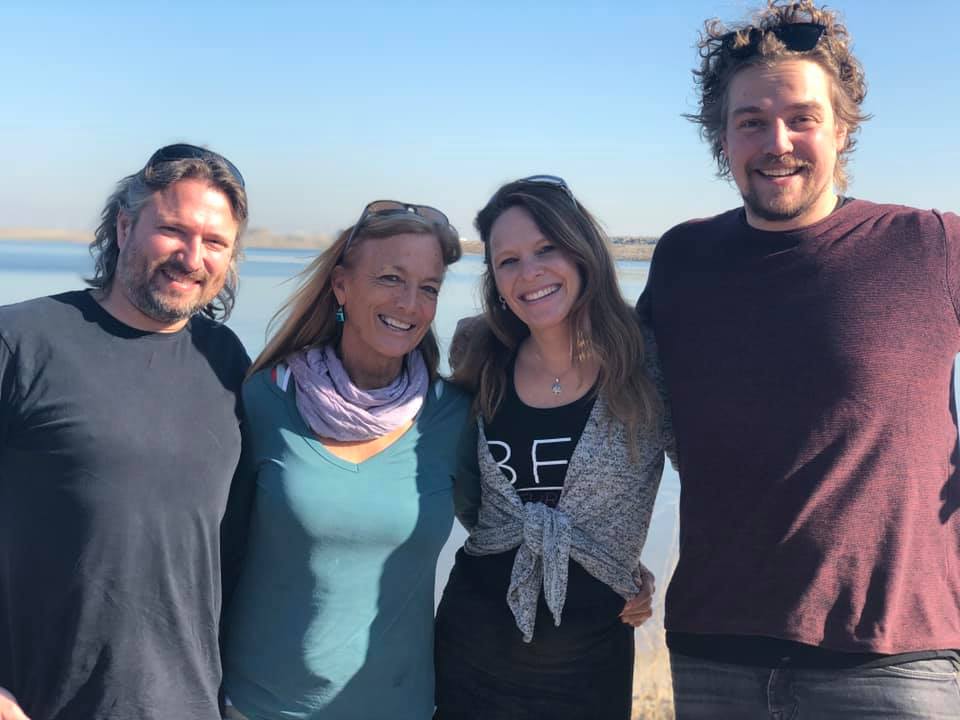21 August 2020
The Cook Islands Whale Research team is very saddened by the death of Rarotonga’s Vaka Puaikura Fire Chief Barry Hill, who died Saturday morning (the 15th of August) at Rarotonga Hospital. His granddaughter Amy Koekemoer is an integral part of our team, and we promised to name the next whale that arrived to Rarotonga after this great man. Amy told Barry about this a few days before he died, and they both agreed that the whale should be named “Chief.”
On Saturday morning the whale research team headed out on the ocean, where we had a wonderful day with 4 whales. First we found a group of 3 smaller whales displaying surface activity. Two of the whales split off and zigzagged around, moving farther and farther offshore. We travelled along with them as they zipped around, blowing hard, surfacing side by side. These are signs of competitive behavior, so this pair appeared to be caught up in a battle. We could hardly keep up with these two, so we left them and headed back towards shore.
As we got back closer to the island, Nan received a text from Amy saying that her grandfather had called her just minutes before he passed. Amazingly, at that exact moment, a beautiful whale appeared off Hospital Hill. It was serendipitous and beautiful!
Shortly after we found this wonderful whale, a group of racing vakas came paddling in our direction. While Chief was down for a dive, Nan predicted that he would surface right next to one of the paddlers. Sure enough, Chief decided to pop up and startle the paddlers and race officials! The research team, paddlers, and officials cheered with delight as Chief came over to say hello.

We spent Saturday afternoon with this beautiful whale and found him again the next day! Even though we didn’t have much of a lee on Sunday, the team headed out. We quickly found a smaller whale which we ID’ed, and then 20 minutes later Chief appeared next to our boat! His dives were about 18 minutes long as he rested, and every time he surfaced, he’d come straight towards us. He definitely recognized who we were. It always fascinates us how a whale knows if you come in “peace.” Sometimes Nan even asks if we could “please have an identification shot or a piece of skin for DNA” to help protect them. They know that we mean no harm.
Since we had the information that we needed on Chief (DNA samples and ID photos), we headed back closer to shore where the water was calmer. For 2 hours we went back and forth and found nothing. Just as we were about to head in, Marisa yelled in an excited voice, “breeeach!” The whale was a few miles away, but we decided to go straight out into the rough water. There were two whales breaching out there. We had one of the whales breach, almost clear out of the water, right next to the boat. He logged for a while and then came over and entertained us. It was Chief! He kept swimming right under the boat and then picking up his tail and practically putting it in the inflatable boat. He swam on his back and showed us his belly right next to the boat, he lifted his tail up, he swirled and twirled, and he scared the bejeezus out of everyone but Nan. With two GoPro’s going and one iPhone on video, the footage is hysterical and fun. What a treat we had with him, and we were very grateful that he did not knock our boat upside down! Of course, this is exactly what Barry Hill would have done as a whale, so we knew that Chief had taken on his spirit. We left him because we knew that he would never leave us, and we had a trip back with giant smiles on our faces. Fifteen minutes later, Matt confessed that the hair on his arm was still standing up straight and his heart was still pounding. When we attended Chief Barry Hill’s funeral Wednesday, a lot of the guests knew that this whale named Chief was out there, and it brought great joy to their hearts.
May you rest in peace, Vaka Puaikura Fire Chief Barry Hill, and may we enjoy your spirit through this very lovely and friendly whale.



